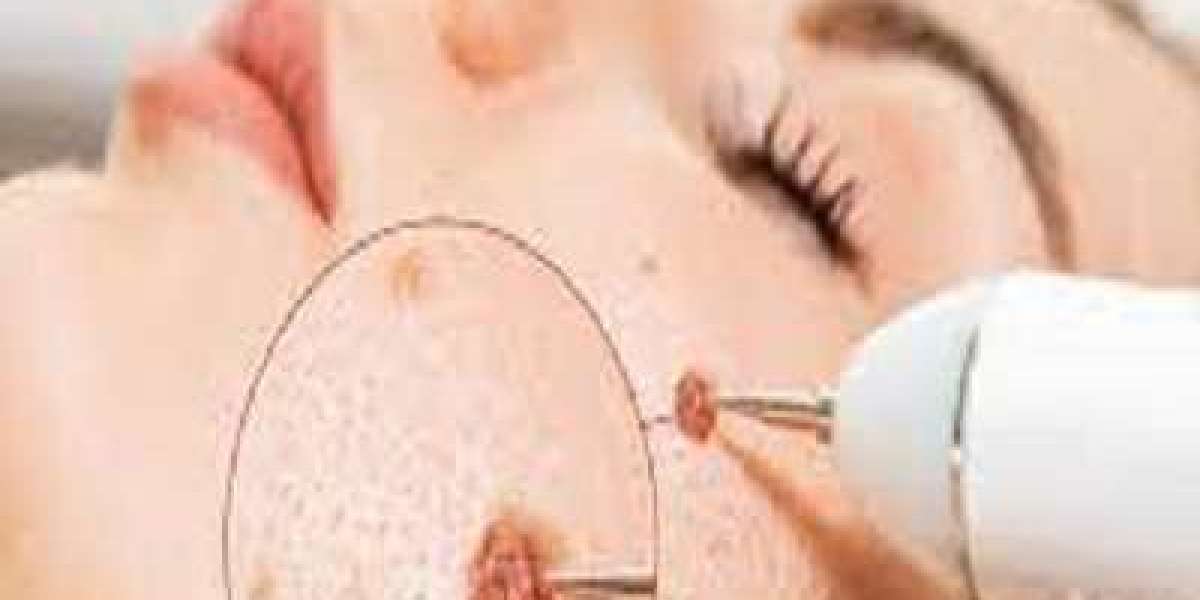Warts are common skin growths caused by the human papillomavirus (HPV) and are frequently seen in children due to their developing immune systems and active lifestyles. Though they are typically harmless, warts can be uncomfortable, unsightly, and sometimes painful, especially if they appear on the hands, feet, or face. Because children’s skin is delicate and their tolerance for discomfort is often low, it’s crucial to approach wart treatment with safety and care. If you’re seeking a medically supervised solution, Warts Removal Treatment In Islamabad offers pediatric-friendly options tailored to young skin.
Why Do Kids Get Warts?
Warts in children are mainly caused by skin-to-skin contact with HPV or contact with contaminated surfaces, such as shared towels, toys, swimming pool floors, or gym mats. A cut, scrape, or broken skin increases the chances of infection, and since children are constantly exploring and playing, they are more prone to such exposure.
The most common types of warts in children include:
Common warts – Often appear on fingers and hands with a rough surface
Plantar warts – Found on the soles of the feet and can be painful
Flat warts – Smaller and smoother, usually on the face or legs
Filiform warts – Thread-like growths often found on the face or neck
Fortunately, most warts in kids go away on their own within months or years. However, if the wart is painful, spreading, or causing emotional distress, treatment is often considered.
When Is Wart Treatment Necessary in Kids?
Although some pediatricians may advise waiting it out, certain situations warrant medical intervention, including:
The wart is painful or interferes with walking or writing
It multiplies or spreads rapidly
It bleeds or shows signs of infection
Your child is self-conscious or distressed by the wart
The wart is in a sensitive area like the face or genitals
Early consultation with a dermatologist can help identify the type of wart and determine the most suitable treatment approach for your child’s skin type and comfort level.
Safe Wart Removal Options for Children
Pediatric wart treatment must be gentle, effective, and minimize the risk of skin damage. Below are the most recommended options:
1. Cryotherapy (Freezing)
Cryotherapy is a commonly used method in which liquid nitrogen is applied to the wart, freezing and killing the infected tissue. While highly effective, it can be slightly painful, making it more suitable for older children or those who can tolerate minor discomfort. Numbing cream is often applied beforehand to reduce pain. Several sessions may be needed depending on the wart’s size and location.
2. Topical Salicylic Acid
This over-the-counter treatment softens the wart and gradually peels away the layers of infected skin. It’s safe for children when used correctly under adult supervision. The treatment should be applied daily for several weeks, and the wart area should be kept dry and covered. Because it’s a gradual method, it’s ideal for small warts and for children who prefer a non-invasive option.
3. Cantharidin (Blistering Agent)
Cantharidin is a compound derived from beetles and is applied by a dermatologist in-office. It causes a blister to form under the wart, lifting it from the skin. The blister dries out, and the wart falls off within a week. The procedure is generally painless during application and is a preferred method for younger children due to its non-invasive nature.
4. Laser Therapy
Laser treatment uses concentrated light to burn off the wart tissue and is considered when other methods fail. While it’s effective, it may require local anesthesia and is typically reserved for stubborn or resistant warts. Due to its precision, laser therapy is particularly useful for warts in difficult or sensitive locations.
5. Immunotherapy
This method involves boosting the body’s immune response to fight off the HPV virus. It may include topical creams like imiquimod or oral medications, especially in cases where warts are recurrent or extensive. Though not commonly the first line of treatment in children, it can be effective for those with a history of persistent warts.
Home Remedies: Are They Safe for Kids?
Home remedies such as apple cider vinegar, duct tape, garlic, or tea tree oil are frequently mentioned in online forums and parenting blogs. While some parents report success, these methods lack scientific validation and may irritate a child’s sensitive skin. Additionally, they can cause allergic reactions, burns, or scars if not used properly.
If you consider home treatment, always consult a dermatologist first. In many cases, professional treatment is safer and leads to quicker, more effective outcomes.
How to Prevent Warts in Children
Preventing warts in children largely depends on good hygiene and behavioral practices. Some simple steps include:
Encourage frequent handwashing, especially after playing outside
Discourage picking or scratching at existing warts
Keep fingernails trimmed and clean
Avoid sharing towels, shoes, socks, or grooming items
Ensure kids wear flip-flops in public showers or pool areas
Treat any cuts or scrapes promptly to prevent virus entry
Even with precautions, warts may still develop, particularly in school-age children. The key is to remain observant and act early when a wart appears.
Helping Children Cope with Wart Treatment
For many children, the idea of visiting a doctor or undergoing treatment can be intimidating. Here’s how parents can support them through the process:
Explain the procedure in simple and reassuring terms
Emphasize that the treatment will make them feel better
Bring a comfort item like a favorite toy or blanket
Reward their bravery with praise or a small treat
Choose clinics experienced in pediatric care to ensure a child-friendly environment
Children are more cooperative and less fearful when they understand what to expect and feel safe during the treatment process.
Conclusion
Warts in children are common and typically harmless, but they can cause discomfort, embarrassment, or complications if left untreated. Thankfully, there are several safe and effective options available for wart removal in kids, ranging from non-invasive topical treatments to professional dermatological procedures. The most suitable approach depends on the child’s age, the wart’s location, and the severity of the condition. Prompt and gentle care ensures faster recovery and prevents recurrence.
Parents looking for trusted pediatric wart removal services can turn to Warts Removal Treatment In Islamabad offered at SKN Cosmetics clinic. Their team of qualified dermatologists provides child-friendly treatment plans using advanced technologies, ensuring your child receives the safest and most effective care tailored to their needs.



